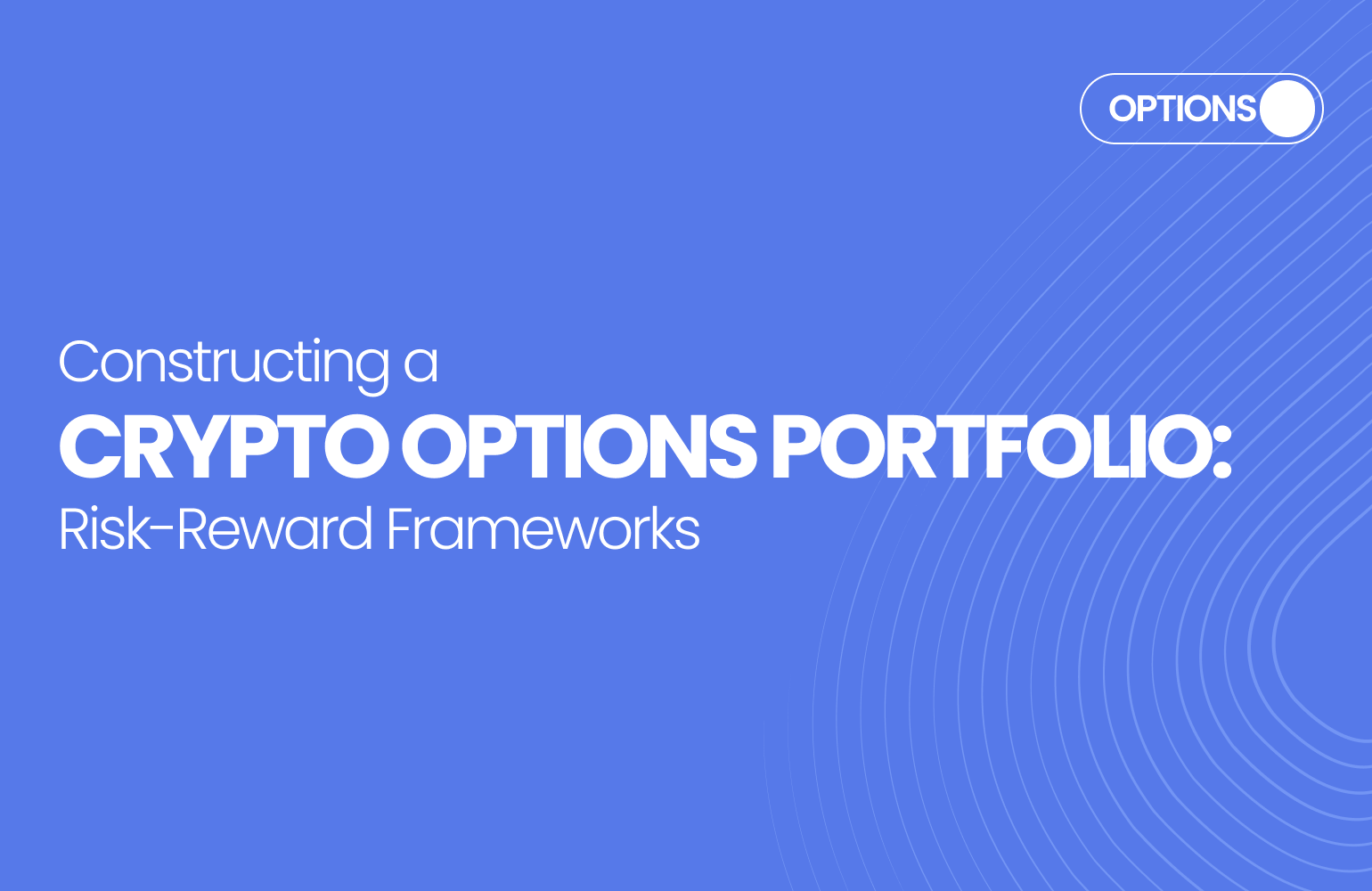In crypto markets, volatility is both an opportunity and a threat. To succeed consistently, traders need more than just good timing—they need a smart, risk-managed options portfolio approach. This is where a well-structured crypto options portfolio built on risk-reward frameworks becomes your edge.
1. Understanding the Crypto Options Portfolio
What Is an Options Portfolio?
An options portfolio is a combination of various option positions—calls, puts, and spreads, across assets like BTC, ETH, and SOL. Its purpose is to balance profit potential with controlled risk.
Key Objectives:
- Hedge spot or futures exposure
- Generate premium income
- Capitalize on market direction or volatility
- Diversify across strike prices, expiries, and instruments
Unique Challenges in Crypto:
- High volatility = greater premium but higher risk
- 24/7 market = continuous monitoring
- Less liquidity in long-dated or deep OTM strikes
Building a solid options portfolio in crypto requires accounting for these unique conditions.
2. The Core Metrics: Greeks & Capital Allocation
Position Sizing
- Allocate only 10–30% of trading capital to options
- Preserve margin and flexibility for adjustments
Track the Greeks
- Delta: Directional exposure
- Gamma: Sensitivity to price movement
- Theta: Time decay (great for sellers)
- Vega: Exposure to volatility changes
Read Related: Option Greeks Explained: Delta, Gamma, Theta, Vega, Rho
👉 Pro Tip: For effective crypto portfolio risk management, aim for a portfolio with controlled net delta and positive theta during range-bound markets.
3. Strategy Mix Based on Market Outlook
Bullish Strategies
- Long Calls
- Bull Call Spreads
- Synthetic Long (Buy Call + Sell Put)
Bearish Strategies
- Long Puts
- Bear Put Spreads
- Covered Calls (for yield on held crypto)
Volatility-Driven Strategies
- Straddles/Strangles
- Iron Condors
- Calendar Spreads (benefit from time decay)
Read Related: Multi-Leg Option Strategies: Straddles, Strangles, Spreads, and Condors Explained
Hedging Strategies
- Protective Puts
- Collars (Put + Covered Call combo)
A well-balanced crypto trading portfolio mixes these strategies based on market conditions.
4. Risk-Reward Rules to Follow
- Never risk more than 1–2% per trade
- Use spreads to define max loss and cost
- Avoid low-liquidity strikes/expiries
- Don’t buy high-IV options unless you expect IV to rise further
- Be realistic with expected returns — options are about asymmetry, not guarantees
Risk control is the foundation of options portfolio management.
5. Portfolio Monitoring and Rebalancing
Weekly Checklist
- Close or roll options nearing expiry
- Recalculate net delta, theta, and vega
- Adjust positions to match current market view
- Reassess allocation per asset or token
Track Performance
- Use spreadsheets or tools to measure P&L, win rate, and Greeks
- Group trades by strategy (naked calls, spreads, combos)
- Learn from high-performing setups
Regular rebalancing ensures your crypto options trading plan adapts to changing volatility and sentiment.
Conclusion
Crypto options trading rewards the prepared. Building a diversified and disciplined options portfolio ensures you’re not just reacting to markets—you’re proactively capturing opportunity with defined risk.
Call to Action: Want to build your crypto options portfolio with the right tools? Start trading structured strategies on Pi42 India’s crypto trading portfolio platform built for both pros and beginners.
Keep Learning:
Options Market-Making in Crypto: Risk Management and Edge Explained
Understanding IV Skew in BTC and ETH Options Markets
Cash-Settled vs. Physically-Settled Options: What Crypto Traders Need to Know

